#bushehr province
Text
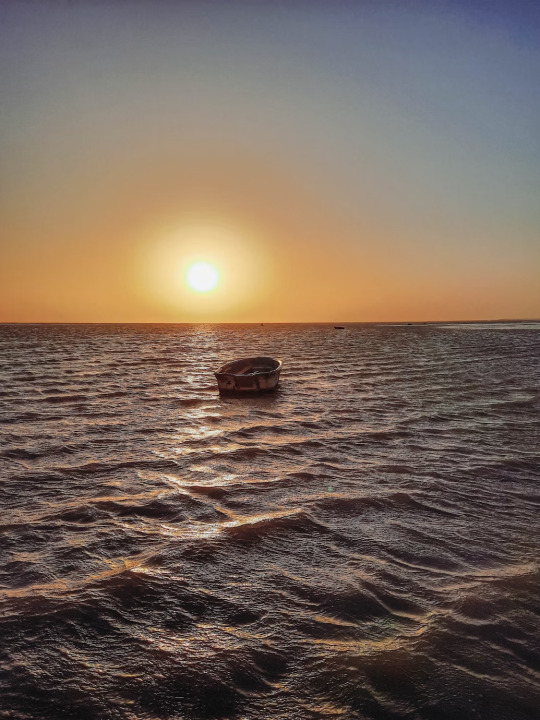
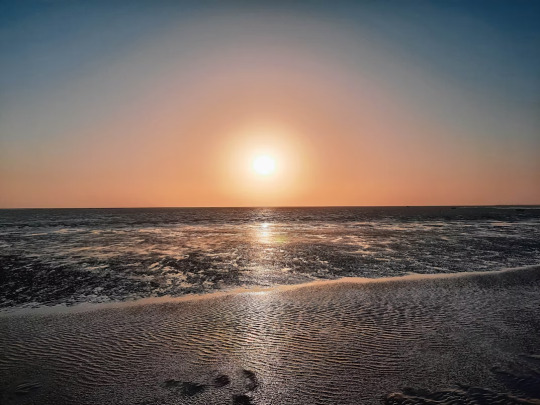
Ganaveh, Bushehr Province, Iran
Amir Deljouyi
2 notes
·
View notes
Text

In the vast region of Iran, there are still many areas whose beauty and attractions are not well known and neglected, and their effects have not yet been introduced to domestic and foreign tourists, travelers and guests.
The region of Kohgiluyeh and Boyar Ahmad is one of the most beautiful provinces of the country, which is known as the land of four seasons. This province is bordered by Chaharmahal and Bakhtiari provinces in the north, Isfahan province in the northeast, Fars province in the east, Khuzestan province in the west, and Bushehr province in the south. The province of Kohgiluyeh and Boyerahmad is the land of soaring mountains and pristine nature.
The beautiful and spectacular scenery of this land evokes a beautiful magical feeling for domestic and foreign travelers, guests and tourists and depicts the north in the south of Iran.
#iran#nature#beautiful#beautiful place#beauty#natural titts#beauties#mountains#re village#clouds#forest#river#lake#lakers
15 notes
·
View notes
Text

🇮🇷⚔️⛴️ 🚨
IRANIAN NAVY SEIZES GAS TANKER SAILING THROUGH THE PERSIAN GULF
Iran's Islamic Revolutionary Guard Corps. (IRGC) announced it has seized a foreign gas tanker vessel shipping what Iranian authorities said was over 2-million litres of "smuggled" gas thorough the southern Persian Gulf Sunday.
Speaking with reporters, Iran's Commander of the IRGC's Second Naval Zone, Heidar Honarian Mojarad, stated that "this morning, a foreign vessel with the flag of a country from Oceania was identified with two million liters of smuggled diesel."
The naval Commander said that the vessel was seized by the IRGC "in accordance with a court order off the coast of the southern Iranian port city of Bushehr," adding that 14 crew members, two of whom were from Asian nations, had been detained and arrested by by local Iranian authorities.
Commander Mojarad also told reporters the confiscated vessel had been handed over to Iran's National Iranian Oil Refining and Distribution Company in the Bushehr Province, adding that the Iranian Navy had used state-of-the-art detection tools to monitor all movement through the Persian Gulf.
#source
@WorkerSolidarityNews
#iran#iran news#iranian news#iranian navy#iran naval forces#irgc#islamic revolutionary guard corps#gas smuggling#tanker seized#politics#news#geopolitics#middle east#war#war news#middle east news#global news#international news#breaking news#current events#persian gulf#ship seized#palestine#israel#united states#oceania#us news#world news#military news
6 notes
·
View notes
Text
Venezuelan President Nicolas Maduro says the country has received an “advanced” oil tanker from Iran as part of a bilateral contract amid increasing cooperation between Tehran and Caracas in various fields. “We have just received a ship with the most advanced engineering and technology in the world,” Maduro said according to Venezuelan state TV. He said that the ship was manufactured by Iran upon Venezuela’s order.
The oil tanker “now comes to serve as a cargo ship for our revolutionary PDVSA,” he added. This is the third Iran-made oil tanker delivered to Venezuela. The South American country received the second tanker on June 11, 2022.[...]
Maduro said in June that the fourth tanker will also join the Venezuelan state-owned oil and natural gas company (PDVSA) in 2024, marking the conclusion of a 2006-signed contract on four oil tankers between the two states.
The tankers are produced by Iran Marine Industrial Company (Sadra) located along the Persian Gulf coast in Bushehr province. The delivery comes as both Iran and Venezuela are under severe economic sanctions imposed by the United States. Tehran and Caracas have expanded cooperation in recent years, especially in the field of energy, to neutralize Washington’s unilateral measures.
16 Sep 22
12 notes
·
View notes
Text
Protests against authorities in Iran in the wake of a deadly building collapse are continuing a week after the incident, videos on social media show.
Angry demonstrators have taken to the streets nightly across Khuzestan province, where the unfinished building fell down last Monday.
The death toll rose to 34, with four people still missing, the state news agency Irna reported on Tuesday.
The incident in Abadan is the deadliest of its kind in Iran for years.
Thirteen people, reportedly including the mayor, two former mayors and the building contractor have been arrested over the collapse, Irna says.
However protesters are blaming the wider authorities, accusing them of negligence and corruption.
Demonstrations have also been held in other parts of Iran, with shouts of "Death to Khamenei!" - a reference to Iran's supreme leader - heard on unverified video posted on social media and said to have taken place in the south of the Iranian capital, Tehran, on Monday night, Reuters news agency reported.
Similar shouts were heard at protests in the southern port city of Bushehr, Reuters said.
On Sunday, a cleric sent by the ruler Ayatollah Ali Khamenei was shouted down as he tried to address mourners near the site of the collapse.
He was heard to whisper to a bodyguard "What's happening?" before trying to calm the crowd, which responded with cries of "Shameless!", according to the Associated Press news agency.
Some rushed a platform used by state TV which was showing the event, cutting off the broadcast, local media said.
Police used force against the protesters there and unverified video also purported to show violence between police and demonstrators in other unidentified places, Reuters said.
A search and rescue operation meanwhile is continuing at the site of the collapsed 10-storey Metropol office block.
Irna reported that the lower floors of the building, on Abadan's busiest commercial street, had been open for a few days while construction work continued above.
The incident has raised questions about building safety standards in the country.
During the 1980s Iraq-Iran war, the region faced huge destruction - and many of the projects to rebuild the area were criticised for poor construction practices.
#nunyas news#got that plane they shot down#now this#and probably several other things#gotta wonder how much longer the people#are going to be willing to stand for it
4 notes
·
View notes
Text
IRGC captured tanker with 2 million litres of fuel
Iran’s Islamic Revolutionary Guard Corps (IRGC) claimed to have seized an oil tanker carrying two million litres of fuel in the Persian Gulf off the southwestern Iranian coast, Iranian media reported on Sunday.
According to the IRGC-affiliated local media, the tanker was sailing under the flag of an Oceania state. The vessel, carrying 14 foreign crew members from two Asian countries, was seized about 60 miles off the coast of Bushehr, a port city located in southwestern Iran.
The IRGC stated that the fuel was smuggled in illegally. It was handed over to the National Petroleum Refining and Distribution Company of Bushehr Province after being confiscated by the IRGC.
Read more HERE
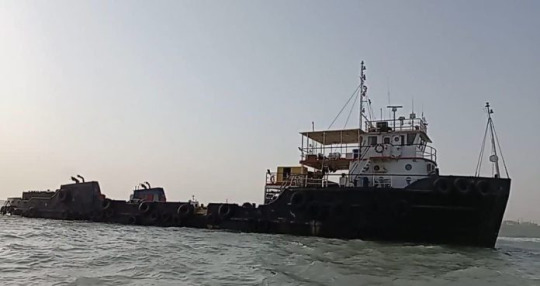
#world news#world politics#news#middle east#middle east news#middle east conflict#middle east war#middle east crisis#human rights#iran#iran news#persian gulf#irgc#vessel#tanker#fossil fuels#fuel
0 notes
Text
Mohammad Kashtkar Iranian Talented Filmmaker
Mohammad Keshtkar Iranian filmmaker, was born in April 8, 2005 in Bushehr province, Iran. At the age of 10, he entered the field of cinematography, facing financial constraints and shooting films only with a mobile phone. He started by playing and gaining experience with the limited resources he had. When he turned 14, he took his work seriously and began
receiving the necessary training in filmmaking and special effects (vfx). By the age of 16, he was fully prepared, working with several brands such as Pepsi. At the age of 18, he started working with foreign rap artists as a cinematographer.
Mohammad’s favorite sport is kickboxing, and even in this sport, he faces challenges. He has decided to establish his own large film studio named “Eagle Studio” in Hollywood, USA, in the future. Mohammad is an expert in vfx, special effects, and 3D scene creation.

1 note
·
View note
Text
Date Suppliers in Iran
Date suppliers in Iran often offer different types of dates to the market. Choosing the best type of dates depends on the needs and preferences of customers and target markets.
Date production is one of the most important agricultural and marketed products in Iran. This product is rich in nutrients and is healthy. Dates also serve as an important source of income for farmers and suppliers in Iran.
History of dates in Iran
The date is a fruit that farmers have cultivated in Iran since ancient times. The long history of this fruit has a deep and cultural meaning. Iran has achieved world fame in this field as one of the date-producing countries.
Variety of dates
One of the most special characteristics of dates in Iran is their variety. Any type of dates you need are in the Iranian market. Below are some of their types.
Mazafati dates: One of the most famous types of dates. Mazafati dates have a dark color and sweet taste.
Zahedi dates: Zahedi dates with semi-transparent skin and sweet taste are usually produced in Fars province and southern Iran. These dates are popular for eating as well as making jam and sweets.
Piarom date: This type of date is grown in Hormozgan province and has brown skin.
Kabkab date: Kabkab date with black skin and sweet taste is one of the most famous products of Bushehr and Fars province.
Harvesting dates in Iran
Summer and autumn are harvest seasons of dates in Iran. In fact, date harvesting ends an important phase of the growth and development of this product. This may cause damage by delay or inaccuracy in harvesting time. In the following, there are explanations about the date harvesting season in Iran:
Summer season: Depending on the type of dates planted and the production area, date harvesting starts in parts of summer. At this stage, the dates are not yet fully ripe. Depending on the type and purpose of consumption, they may be used as sweet dates or sour dates.
Autumn season: Farmers harvest most Iranian dates in the autumn season. At this stage, the dates are fully ripe and sweet enough. Harvesting dates in the fall usually last from late August to October.
Harvesting methods: They harvest dates by manual and mechanized methods. In Iran, the manual method is usually more popular. The workers go to the top of the trees and separate the dates from the tree in clusters. The factory separates each date seed from the cluster in a hygienic way.
Packaging and distribution: After harvesting, the dates must reach the stage of packaging and storage. Dates are mainly transported in special boxes or packages to protect them from damage and spoilage. Then they are distributed to domestic and foreign markets.
Export: Iran is one of the largest exporters of dates in the world, and the successful harvest of this product has an important impact on international markets. As an important source of income for the country, the export of dates reaches its peak during the harvest season.
Date Suppliers in Iran
Date suppliers in Iran play an important role in providing and supplying this vital product. As one of the world's most reliable date-producing countries, Iran has many suppliers who supply quality date products to domestic and foreign markets. As a supplier, we have the best relationship with the best producers in Iran, mainly in Hormozgan, Fars, Sistan Baluchestan, and Khuzestan.
To get the best and highest quality dates from Iran, consider Benmary Foods. Benmary Foods is a reliable trading company and supplier in the field of dates and dried fruits in Iran. This company is famous for its high experience and expertise in supplying quality date products for domestic and foreign markets.
With Benmary Foods, you can be sure that you get high-quality and authentic dates from Iran. As one of the leaders in the date supply industry in Iran, this company serves its customers well around the world with its commitment to quality and unparalleled services.
SOURCE : BENMARYFOODS
0 notes
Photo
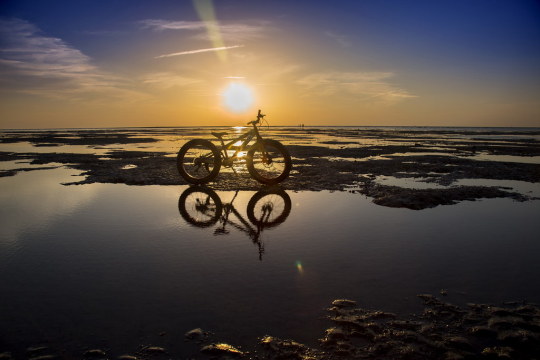
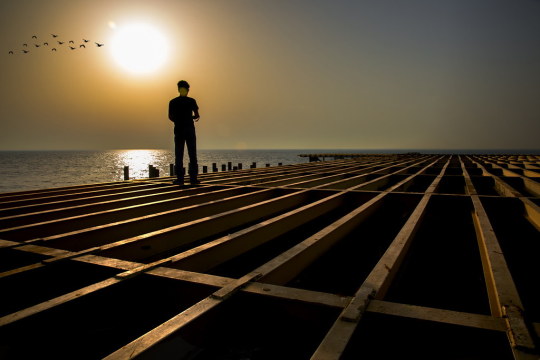
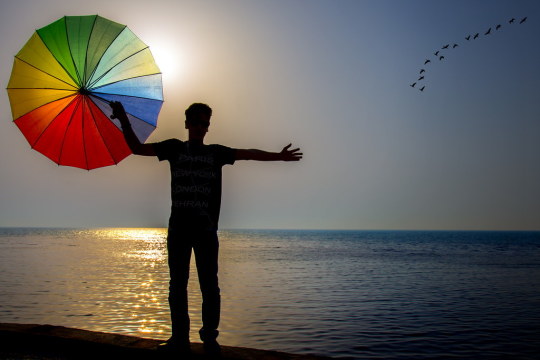
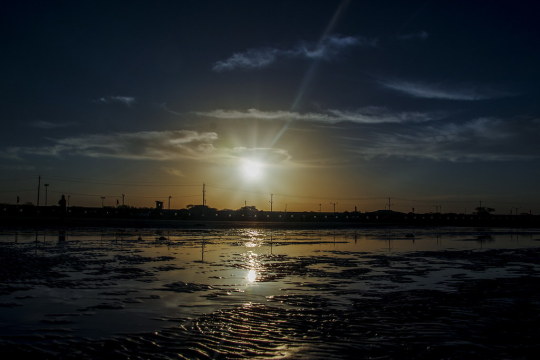
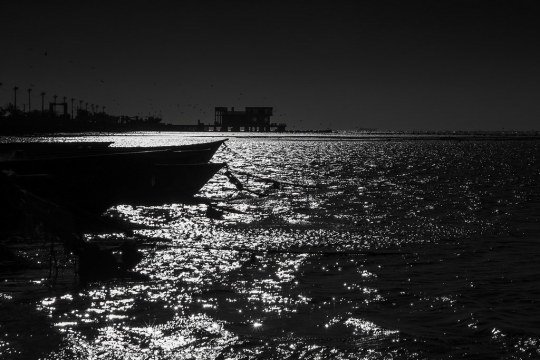
Bushehr by Reza Sobhani
Via Flickr:
also known as Bandar-e-Bushehr is a city in the Central District of Bushehr County, Bushehr province, Iran. It is a port city and the capital of the province. At the 2006 census, its population was 161,674 in 25,158 households
0 notes
Text
TÉHÉRAN – L'Iran a affirmé mardi un jour férié de deux jours pour les employés du gouvernement et les banques dans tout le pays tandis que les températures torrides balaient le pays, ont rapporté les médias officiels.
La décision est intervenue après que le bureau météorologique a prévu des températures dépassant 40 degrés C dans de nombreuses villes et oscillant autour de 50 degrés C dans le sud-ouest.
Le radiodiffuseur d'État IRIB a affirmé que de nombreuses villes, notamment dans les provinces d'Ilam, de Bushehr et du Khuzestan, ont vu les températures dépasser 45 degrés Celsius ces derniers jours.
"Le cabinet a accepté la proposition du ministère de la Santé de déclarer les mercredi et jeudi jours fériés dans tout le pays pour protéger la santé publique", a affirmé le média officielle IRNA, citant le porte-parole du gouvernement, Ali Bahadori Jahromi.
L'IRNA a affirmé que la décision avait été prise grâce à ce qu'elle a évoqué en tant qu'une vague de chaleur "sans précédent" à travers le pays.
D'après l'IRIB, la ville de Dehloran, dans l'ouest de l'Iran, a enregistré la température la plus importante de 50 degrés C en Iran au cours des dernières 24 heures.
Il a également ajouté que les températures devraient aussi augmenter dans le nord, y compris dans la ville d'Ardabil de même que sur les rives sud de la mer Caspienne.
Le ministère de la Santé a mis en garde contre les risques de coup de chaleur dus à une surexposition au soleil et a exhorté les gens à rester à l'intérieur entre 10h et 16h.
Le porte-parole du ministère de la Santé, Pedram Pakain, a qualifié d'"alarmant" le nombre de maladies liées à la chaleur ces derniers jours.
En juin, l'Iran a modifié les horaires de travail d'été des employés du gouvernement qui commencent désormais plus tôt, afin d'économiser l'électricité dans les bureaux quand les températures atteignent des sommets.
La province du sud-est du Sistan-Baloutchistan a été parmi les plus durement touchées par la canicule.
Environ 1 000 personnes y ont été hospitalisées ces derniers jours grâce à la hausse des températures et des tempêtes de poussière, a indiqué l'IRNA.
La région est depuis longtemps confrontée à de graves ruptures d'eau, qui ont déclenché des troubles lundi contre un barrage en amont dans l'Afghanistan voisin limitant le débit d'eau, a indiqué le média Tasnim.
L'Iran, avec une population de plus de 85 millions d'habitants, fait partie des pays les plus vulnérables au changement climatique et à la hausse des températures mondiales.
Comme les états voisins, il a subi des périodes de sécheresse et des vagues de chaleur extrêmes pendant des années, qui devraient s'aggraver à mesure que le changement climatique se poursuit.
Il a aussi subi des sécheresses répétées de même que des inondations régulières, un phénomène aggravé quand des pluies torrentielles tombent sur une terre brûlée par le soleil. AFP
0 notes
Text
For six weeks, major protests have roiled Iran. The killing of Mahsa Amini, a 22-year-old Iranian from Saqqez, a city in Iran’s Kurdistan province, has forced a reckoning between Iranian society and the state. Iranian women are asserting their rights, and more broadly, the Iranian people are demanding fundamental political change. The Iranian state has so far responded to the protesters with force, leaving hundreds of people dead. Authorities have made no indication that they will initiate a political process to meet the public’s demands. The protests are set to continue.
Workers have played an important role in the protests so far, organizing demonstrations and using their role in the economy to both express solidarity with the protests and put pressure on authorities. Lawyers and doctors have staged protests in Tehran and other major cities. Various groups of industrial and transport workers have organized demonstrations. Teachers have helped organize talking groups and discussion forums among school students, whose acts of civil disobedience have become among the most notable of the nascent movement.
But even as different labor groups contribute to the cause and call for strikes, workers are not yet joining the protests in larger numbers or staging ongoing mass strikes to put significant economic pressure on authorities.
On social media, the hashtag “general strikes” has trended since the beginning of the protests. Supporters of the demonstrations, including those outside of Iran, hailed the bazaar strikes held by shopkeepers in numerous cities during the first weeks of the movement. They then shared reports of oil strikes in Kangan city, Bushehr, and Abadan. Anticipation grew when the Coordination Council of Iranian Teachers’ Trade Associations declared a national strike from Oct. 23 to Oct. 24.
However, these strikes were unsuccessful—none were large enough to affect the production of goods or the provision of services. The bazaar strikes largely consisted of shop owners boarding up their windows to prevent property damage. The oil strikes were limited to small pockets of contract workers, mostly during lunch or shift breaks. The teachers’ strike was limited to only a few classrooms in Kurdistan. The much-anticipated general strike has yet to materialize.
The notion that a general strike could make the difference in Iran’s new protest movement is tied to the memory of the 1979 revolution that led to the founding of the Islamic Republic. Beginning in 1978, strikes carried out by civil servants, municipal workers, and even oil workers put significant pressure on the shah’s regime. But the conditions that enabled major labor mobilizations in 1979 do not exist today. Those strikes were successful in part because they were led by workers with stable jobs in integrated and state-dominated sectors. Beyond the bazaar, strike action among more precariously employed workers in the private sector was limited.
Today’s Iranian workers are more precariously employed than in 1979, making it difficult for them to mobilize. Iran’s Ministry of Petroleum directly employs less than a third of all oil workers in the country and relies on private contractors to provide support. Public-sector teachers and doctors face fierce competition from lower-paid workers in sprawling private sectors. After years of privatization, fewer than a hundred large industrial enterprises remain in state hands. Most of the workers in these firms are employed on temporary contracts.
The 1979 revolution contributed to workers’ organization, but today, unionization rates are dismal. Widespread union busting and privatization in the 2000s, combined with the layoffs and job insecurity of the sanctions-afflicted 2010s, have left Iranian workers unorganized. Over time, the loss of union structures has made it more challenging for political struggles to translate into workplace strikes. In the late 1990s, for instance, workers were able to mobilize their organizations to support the reformist leader Mohammad Khatami. A decade later, declining unionization prevented stronger workplace action during the 2009 Green Movement. The situation is even more dire today.
Aside from a lack of formal organizations, economic factors have become a greater impediment to worker-led political action. Between 2010 and 2020, the median annual expenditure of households headed by blue collar workers had fallen from $4,600 to $3,900, a decline of 15 percent, according to data from the Statistical Center of Iran. With little savings, most workers live paycheck to paycheck. They cannot afford to forgo wages and fear getting fired in an economy with significant unemployment.
In October, managers at the Haft Tappeh Sugarcane, a large state-owned firm, were reportedly urged by authorities to “do anything to prevent workers’ protests.” One day before workers had planned a protest, they suddenly agreed to pay out months’ worth of delayed wages. More recently, the Persian Gulf Mining and Metal Industries Special Economic Zone urged major employers in Hormozgan province to pay wage arrears “in order to prevent workplace grievances that might become a reason for participating in protests.” Iranian authorities recognize that economic grievances are a major motivation for protests and have stepped up repression.
An oil workers’ strike planned for Oct. 29 was postponed because, as organizers explained, “our workplaces have become securitized.” But authorities also understand that Iranian workers are in a precarious position—many workers will refrain from protesting if their wages and jobs are on the line.
In a recent interview published in Persian, Jack Goldstone, a leading theorist of social revolutions, suggested that “continuous strikes at oil installations and among workers of other important and key sectors” are among the conditions necessary for the success of the current protests in Iran. But organizational and economic factors make it unlikely that these kinds of major strikes will materialize in Iran. Even so, that does not mean that workers cannot contribute to the protest movement.
Strikes played a major role in the 1979 revolution because they were a viable and effective tactic. But strikes are not the only form of political action that workers can take. As was clear in just the first few weeks of the protests, workers can show solidarity and make their demands heard in a variety of ways. It is important for those observing the protests from afar not to foist on workers their ideas of what effective mobilizations look like, especially in the short term.
Moreover, while Iranian workers currently lack the unions and structures to quickly organize, the political necessity to engage in the protests may itself spur new kinds of organizing. In the lead-up to the 1979 revolution, national strikes only became a feature of the movement after months of popular demonstrations. If the protest movement manages to sustain itself in the face of state repression, that will give time for labor activists to build new networks, taking advantage of the extraordinary solidarity being expressed among various Iranian social groups and among the diaspora.
Finally, the economic conditions for workers could also change. Iran’s economy remains in a fragile recovery, and continued unrest as well as diminished prospects for sanctions relief will prevent any significant improvement in Iranian household welfare. But there is scope for actors outside of Iran to provide economic support to Iranian workers. The most prominent proposals of this kind call for a strike fund. But any such fund would create a perverse financial incentive by only assisting those workers who put themselves in harm’s way. Iranian authorities are also likely to move aggressively to block any financial transfers made as part of a strike fund.
A better approach would be to make it easier for Iranians in the diaspora to send money to family and friends in Iran in the form of remittance transfers. This would give many workers the means to partake in strikes by helping them overcome the fears associated with a loss of income. For other workers, remittances would help make ends meet in an economy in which Western sanctions have contributed to skyrocketing inflation.
Encouragingly, research shows that unconditional remittance transfers are associated with greater political participation, including in protests. Increased remittance transfers would help restore mobilization capacity among Iranian workers but would leave it up to individuals to decide when they are prepared to join strikes given the inherent risks.
Addressing Iranian workers on Labor Day, former Ayatollah Ruhollah Khomeini once declared, “One of the goals of the Islamic Republic is to give the whole industry of the country into the hands of believers, who are the ones the revolution belongs to.”
More than four decades after the founding of the Islamic Republic, there are fewer believers in the revolution than ever before, and the state’s failure to ensure the welfare of workers is among the many reasons for this loss of faith. Today, little belongs to Iranian workers, who are unorganized and disempowered. That is precisely why a new revolution may prove difficult to foment.
1 note
·
View note
Text
Protests hit Iran’s oil and petrochemical sectors amid widespread anti-regime actions
Protests hit Iran’s oil and petrochemical sectors amid widespread anti-regime actions
Work stoppages hit the Islamic Republic of Iran’s critical energy sector on Monday in the oil-rich province of Bushehr on the Persian Gulf.
Dramatic video footage circulating on social media showed contract workers in the city of Asalouyeh chanting, “Down with the dictator,” in a reference to Supreme Leader of Iran Ali Khamenei, who has not hesitated to order his security forces to mow down…
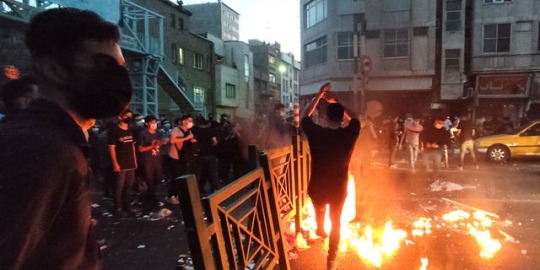
View On WordPress
0 notes
Text
Protests hit Iran’s oil and petrochemical sectors amid widespread anti-regime actions
Protests hit Iran’s oil and petrochemical sectors amid widespread anti-regime actions
Work stoppages hit the Islamic Republic of Iran’s critical energy sector on Monday in the oil-rich province of Bushehr on the Persian Gulf.
Dramatic video footage circulating on social media showed contract workers in the city of Asalouyeh chanting, “Down with the dictator,” in a reference to Supreme Leader of Iran Ali Khamenei, who has not hesitated to order his security forces to mow down…
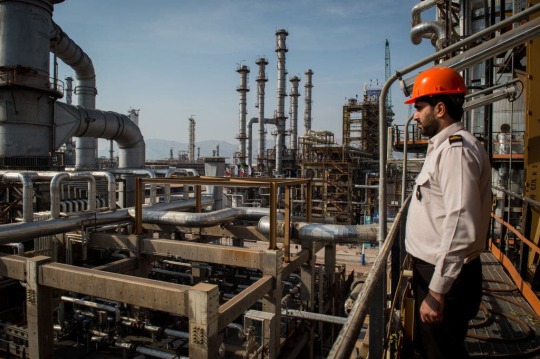
View On WordPress
0 notes
Text
В иранской провинции Бушер на высоте в 1350 метров находятся соляные скалы и купола Джашак. Это одно из самых активных месторождений на Ближнем Востоке. Цвет соли варьируется от обычной белой до синей, розовой, красной или оранжевой. Кажется, что кто-то просто покрасил скалы, но всему виной примеси других минеральных солей...
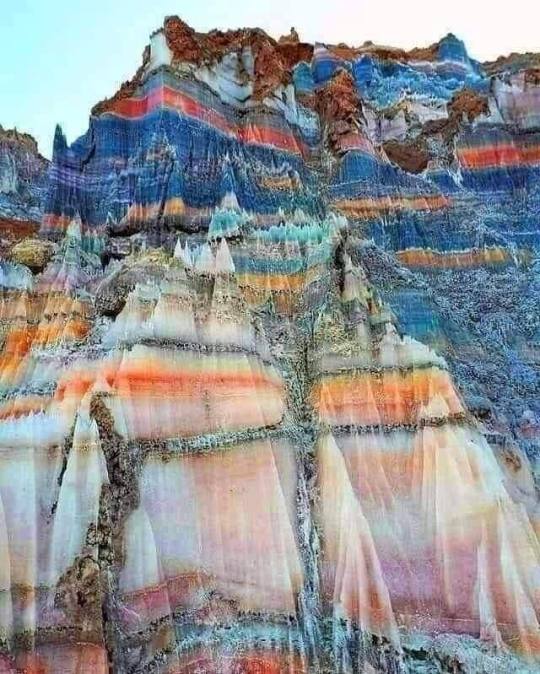
In the Iranian province of Bushehr, at an altitude of 1,350 meters, there are salt rocks and domes of Jashak. This is one of the most active deposits in the Middle East. The color of the salt varies from ordinary white to blue, pink, red or orange. It seems that someone just painted the rocks, but the impurities of other mineral salts are to blame...
0 notes
Text
Buy dried shrimp No Further a Mystery
I would like to acquire electronic messages, which can contain promotions, solution information and repair offers, from McCormick. I recognize that I could unsubscribe at any time utilizing the decide-out connection offered from the electronic messages.
You have to buy dried shrimp you should Get hold of us providing dried shrimp reputed for being a free session for virtually any issues other cherished merchandise. With the tactic incredibly very easy to get by way of on the internet, connect with now to possibly seafood hotline phone quantity and buying Giau correct folks offline.
Dried shrimp is amongst the tasty foods which have loads of nutrients. Our factories and sales centers sell all types of dried shrimps at reasonable charges and in bulk directly.
As a result of its part in decreasing the potential risk of many Long-term illnesses and most cancers, shrimp consumption is suggested for all persons. Shrimp is well-known thanks to its simplicity of intake and range of cooking menu.
plumbaroakland.com is often a participant inside the Amazon Companies LLC Associates Plan, an affiliate promoting system meant to provide a means for web-sites to gain advertising and marketing charges by promotion and linking to Amazon.
Also, exceptional Houses like blocking cancers, avoiding Alzheimer’s condition in aged age and large quantities of omega-3 and phosphorus in it have manufactured dried shrimp very popular Amongst the people.
Dried shrimp contain large quantities of phosphorus and iron, which happen to be very helpful for increasing small children and Expecting women. Selenium, iodine, omega-3, vitamins D3 and B3 are other elements in dried shrimp. Even with these substances in dried shrimp meat, it's Safe and sound to state that consuming dried shrimp is rather effective in expanding the human body’s resistance, strengthening inflammation, heart and nerve disorders, having a positive impact on blood circulation and keeping the liver healthier. Shrimp include omega-3 fatty acids that assistance Management hypertension
As a result of large capacities of Bushehr province in catching a myriad of aquatic animals for example fish , shrimp , Crab, Compound fish, and so on., together with the existence of various shrimp farming web pages In this particular province, a huge selection of these goods per year, right after Processing is exported to world-wide marketplaces, where Marvish Group, with its powerful management, experienced personnel and very good aid of fishermen, has the capacity to work as a robust supplier in world marketplaces.
Omega A single Freeze Dried Shrimp are a fantastic significant-protein food stuff to incorporate into the staple diet regime of carnivorous and omnivorous fish. Our shrimp makes a fantastic addition to salads or seafood delicacies. These mouth watering shrimps are just the ideal sizing for appetizers and salads.
We are unable to comprehensive your request right now. Be sure to test all over again later on. This provide is invalid or not readily available any more.
This products is usually obtained right, during which situation fees are decreased as well as solution can be procured at the manufacturing unit door price. In bulk buys, you may lower the price of merchandise, which is very suited to merchants, and purchase dried shrimp is finished by highly regarded companies. Producers of top quality dried shrimp out there to be able to answer a wide range of consumers have increased the speed of manufacturing during the place so that they can achieve mass creation of these solutions.
This engineering we use to assemble our checklist will depend on several different things, which include but not buy dried shrimp restricted to the next: Model Value: Every manufacturer of Louisiana Dried Shrimp has a price all its have.
Along with the event of the fishery sector, the providers delivered by means of the online market place becomes more common, we now give dried shrimp models trustworthy service excellent to shoppers the items dried shrimp but still scrumptious hygienic basic safety, we usually strive to frequently create products which make the most effective dried shrimp, devoted personnel, crystal clear import methods, meticulous, demanding checking of each and every dwelling input on the output segment, so our clients are usually satisfied.
Expensive prospects, you may Call our product sales consultants to obtain and provide dried Dried Shrimp price tag for export. Shrimp farmed Iran is known while in the area and likewise in the world.
1 note
·
View note
Text
The deadly collapse of a building in Iran has accentuated anger over price rises and economic deprivation that sparked protests which have now lasted three weeks. With video footage showing the use of bitter slogans against the government and even Khamenei, the protests present a delicate moment for the Iranian leadership.
Protests have taken place in Iranian cities since early May over the rise in costs of basic foodstuffs such as bread. "The protests present a significant challenge to the Islamic Republic,” says Aarabi.
Protests against the government in Iran are becoming more widespread and are being led by the working class, Rouhani has said.
But unconfirmed reports said the real number could be even higher and the developer had not died, as widely reported but been allowed to flee.
Slogans shouted targeting senior regime officials have included repeated chants of death to Khamenei, according to footage posted on media accounts. Hecklers in Abadan drowned out an address by an ayatollah with calls of shameless.
Protests have spread to other cities including the Gulf hub of Bushehr, where protesters twisted the Islamic mantra of “Death to America” by chanting “our enemy is right in front of us, they lie when they say it is American.”
Security forces have used live fire to quell the protests, with extra forces deployed to Abadan.
"This shows the shaky and unstable situation Iranian regime is in—any incident can lead to massive protests which can get out of control—so a building collapse is looking upon as an existential threat to the system,” says an Iranian activist.
Ahmadinejad has visited Abadan, a town in the northeastern province of Kermanshah, where hundreds of people died in an arson attack on a cinema 40 years ago.
The inferno at the Cinema Rex, one of the deadliest terror attacks in history before September 2001 killed more than 80 people. The collapse of the Abadan cinema building in Tehran is being seen as a catalyst for the protests against the shah regime, according to Arabi.
Activists say that as in previous upsurges of unrest in Iran in recent years—such as the November 2019 protests over fuel rises—authorities have deliberately slowed down or cut access to some areas of the internet.
"Anecdotal reports are indeed supporting the fact that in areas where protests are occurring there are mobile shutdowns and disruptions ongoing,” Alimardani said.
Instagram and WhatsApp, both owned by Meta, are still not censored in Iran and are the most used applications. Twitter, YouTube, Facebook and Telegram are all blocked in the country.
"Protests are messy and complicated events and censoring or policing speech is impossible,” she says.
Ghafouri is reportedly being boycotted by Iranian state media after supporting the protests in a post-match interview.
A group of Iranian filmmakers have called on security forces to lay down their arms in the face of outrage over the collapse of the Abadan film studio.
The waves from the protest were felt at the Cannes Film Festival. Tearfully breaking into Persian, she said while happy to win “my heart is with the men and women of Abadan.” Ebrahimi was forced to leave Iran after becoming the victim of a sex tape in 2006.
0 notes